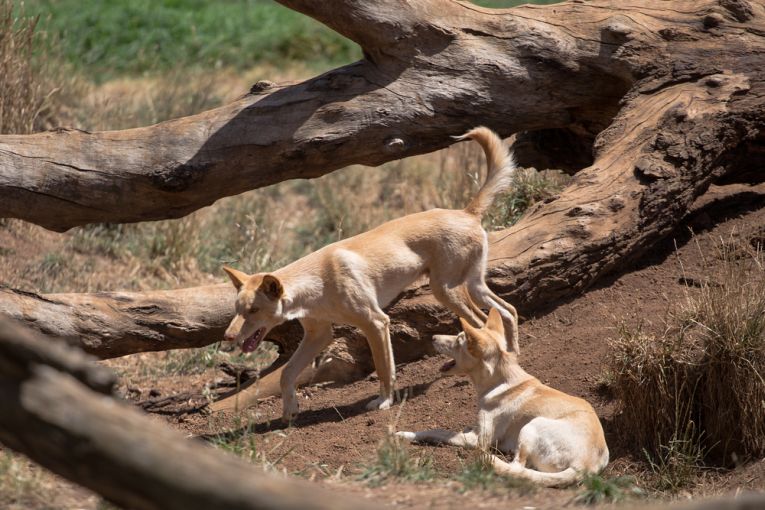When the giant mammals disappeared in a Pleistocene extinction, Australia never quite recovered from the predator/prey imbalance. Dingoes have been blamed for losses of fauna since then, but it seems that the Australasian "wolf" is blameless, except for the 2 fellow predators, the thylacine and the "Tasmanian" devil. The Ochre Project is just one example of a group showing up the more pleasant side of the canine's character.
As elsewhere, humans are blamed for almost any extinction, including that of the giant mammals such as kangaroos and giant birds like the emu. Landscape burning may have been their tool of extinction, but we can never discount climate change. We believe firmly that the dingo only arrived with people about 4000 years ago, and quickly established wild populations. The human population grew and developed hunting method, including hunting the native predators. Prey species and the thylacines and devils would all have been reduced in size. The problem is the existence of early El Niño events that would have influenced the Australian continental mass particularly, and Tasmania less so.
With a mathematical model to help, the different theories can be examined carefully, using kangaroo species as the theoretical prey with the 4 predators, inclusive of humans. Rainfall effects on vegetation were accounted for in the algorithms, leaving a clear result blaming us! Every other factor was much less important. Tasmania is beautifully explained because we know their native population of humans did not increase in line with the mainland. That means they were able to retain the thylacine and devil there, until the Europeans arrived.
Without the dingo, then, the natural balance that was twice disrupted after the Pleistocene would have been far, far worse. Many communities are currently discovering the need for large predators in the ecological landscape. Australia happily used its native, but placental, dog.
Christopher Johnson, Barry W. Brook, Corey Bradshaw, and Thomas Prowse produced this article in The Conservation, Science Journal and within Live Science's Expert Voices: Op-Ed & Insights.










